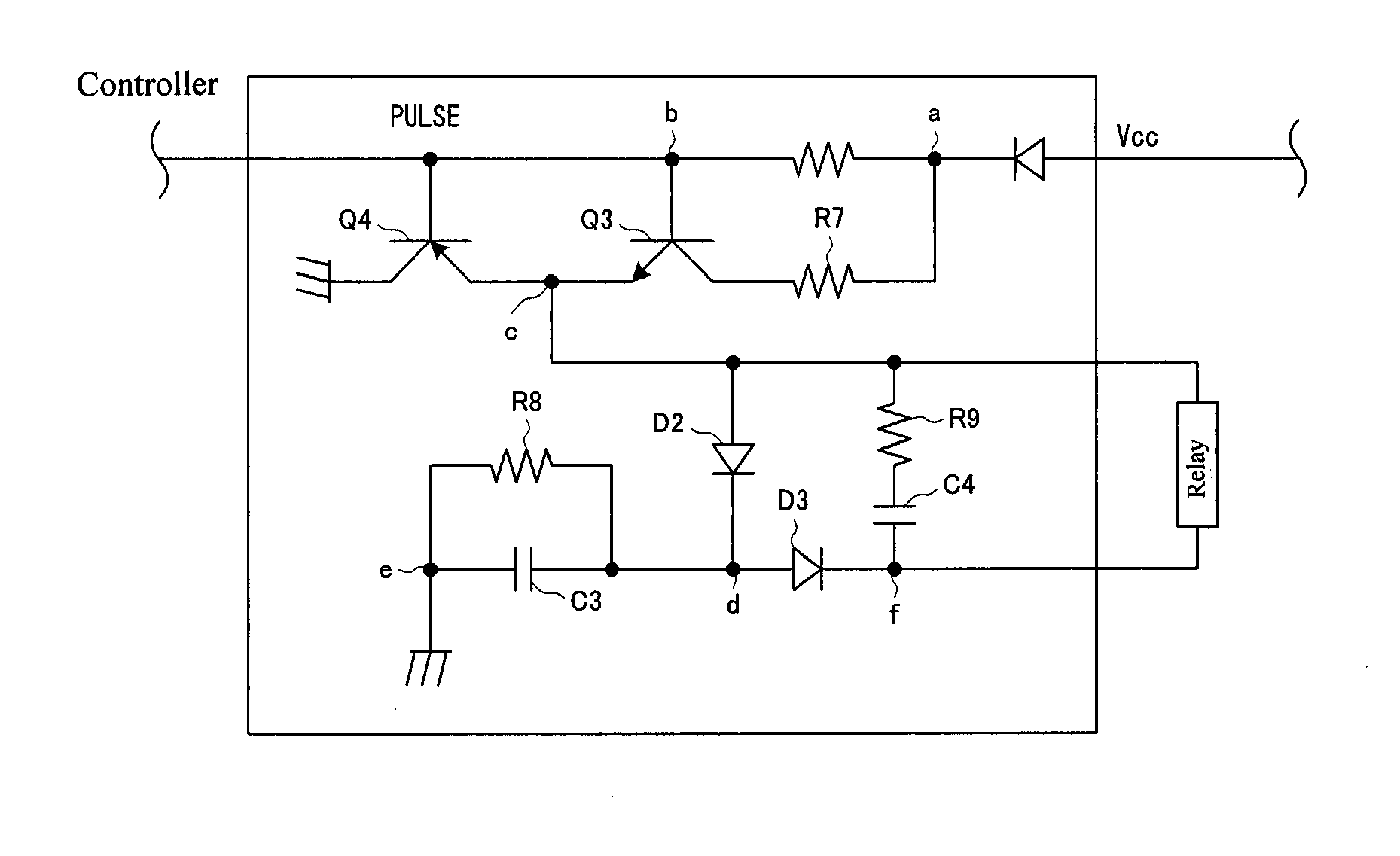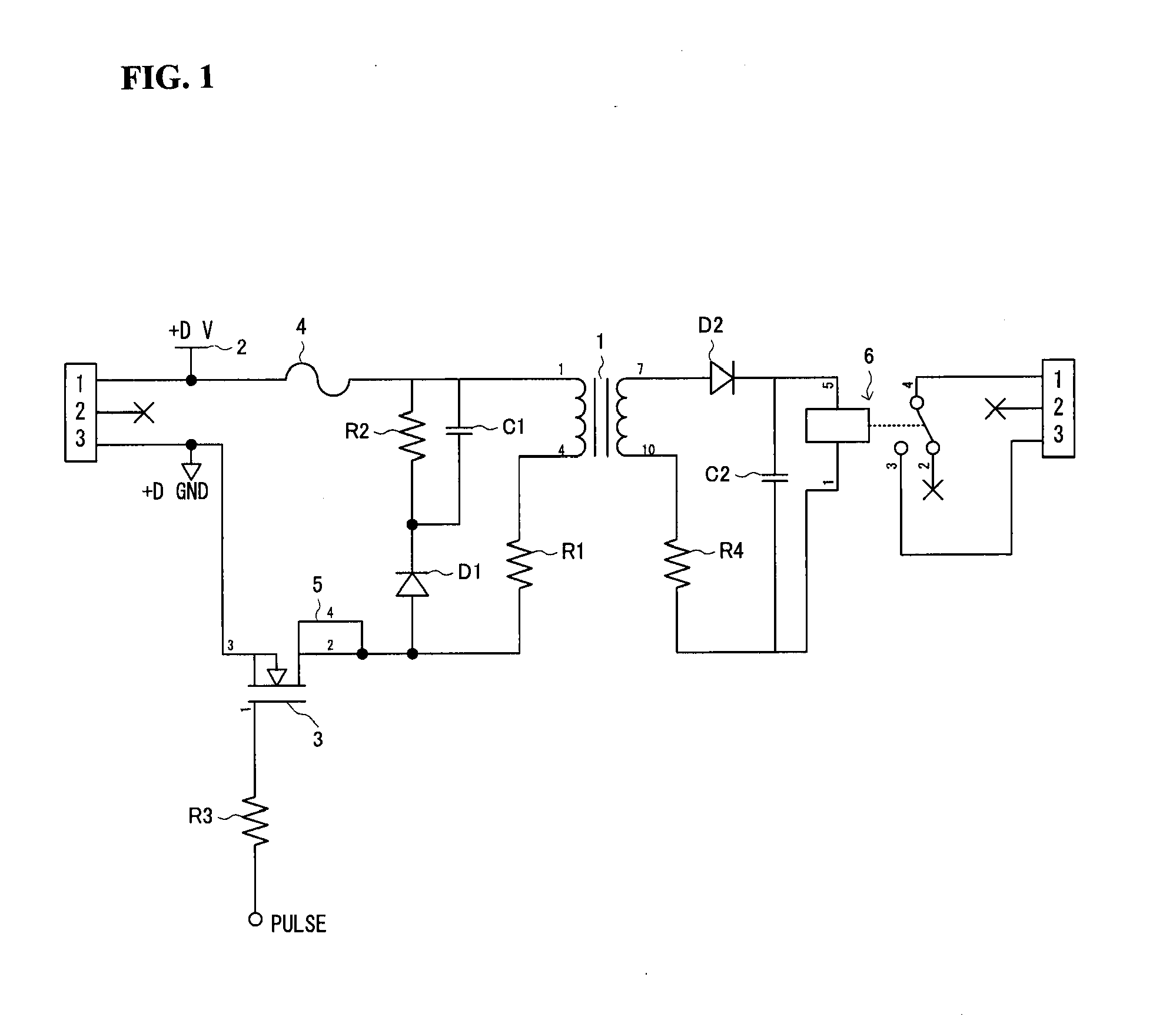Relay driver circuit
- Summary
- Abstract
- Description
- Claims
- Application Information
AI Technical Summary
Benefits of technology
Problems solved by technology
Method used
Image
Examples
Embodiment Construction
[0024]Forms exemplifying the present invention are explained in detail below in reference to the drawings.
[0025]As illustrated in FIG. 1, the relay driving circuit according to an example of the present invention has a transformer 1; a circuit (primary-side circuit) that is connected to the primary-side coil of the transformer 1; and a circuit (secondary-side circuit) that is connected to the secondary side coil of the transformer 1.
[0026]A DC power supply 2 is connected in series with the primary-side circuit. Additionally, a switching element 3, a fuse 4, a feedback circuit 5, and a resistor R1 are connected in series between the transformer 1 and the DC power supply 2, and a diode D1, and a resistor R2 and a capacitor C1, which are each connected in series with the diode D1, are connected in parallel between the transformer 1 and the DC power supply 2. A pulse signal from a microcontroller is inputted into the switching element 3 through a resistance R3.
[0027]In the secondary-sid...
PUM
 Login to View More
Login to View More Abstract
Description
Claims
Application Information
 Login to View More
Login to View More - R&D
- Intellectual Property
- Life Sciences
- Materials
- Tech Scout
- Unparalleled Data Quality
- Higher Quality Content
- 60% Fewer Hallucinations
Browse by: Latest US Patents, China's latest patents, Technical Efficacy Thesaurus, Application Domain, Technology Topic, Popular Technical Reports.
© 2025 PatSnap. All rights reserved.Legal|Privacy policy|Modern Slavery Act Transparency Statement|Sitemap|About US| Contact US: help@patsnap.com



